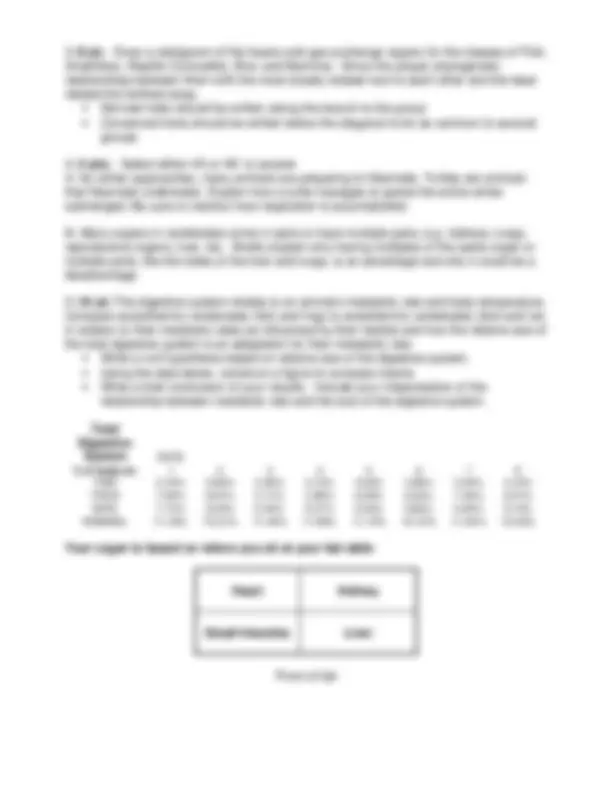



Study with the several resources on Docsity

Earn points by helping other students or get them with a premium plan


Prepare for your exams
Study with the several resources on Docsity

Earn points to download
Earn points by helping other students or get them with a premium plan
Community
Ask the community for help and clear up your study doubts
Discover the best universities in your country according to Docsity users
Free resources
Download our free guides on studying techniques, anxiety management strategies, and thesis advice from Docsity tutors
A lab assignment for biol 1441 - principles of biology ii, focusing on the comparative anatomy of vertebrates and their adaptation to life on land. Students are required to study the digestive, respiratory, urinary, and reproductive systems, with a specific focus on the structure and function of assigned organs (liver, small intestine, kidney, or heart) and their adaptations in various animals (fish, amphibia, bird, and mammal). The assignment includes constructing figures, interpreting results, and writing conclusions.
Typology: Lab Reports
1 / 2

This page cannot be seen from the preview
Don't miss anything!


x se x se x se x se Body wt. (g) 262.79 1.75 167.21 0.95 399.17 1.54 223.81 0. Digestive System Organ wt. to body wt. (%) small intestine 0.68% 0.12% 1.09% 0.04% 1.96% 0.03% 3.79% 0.03% liver 0.76% 0.01% 2.31% 0.02% 2.89% 0.03% 4.70% 0.02% Cardiac System heart 0.25% 0.05% 0.50% 0.06% 1.85% 0.11% 0.73% 0.03% Respiratory System Gas exchange: gills, lungs 2.63% 0.04% 0.54% 0.02% 1.76% 0.02% 1.02% 0.01% Urogential System kidneys 0.18% 0.01% 0.54% 0.03% 0.45% 0.06% 0.98% 0.04%
3.( 8 pt ). Draw a cladogram of the hearts and gas exchange organs for the classes of Fish, Amphibian, Reptile (Crocodile), Bird, and Mammal. Show the proper phylogenetic relationships between them with the most closely related next to each other and the least related the farthest away.